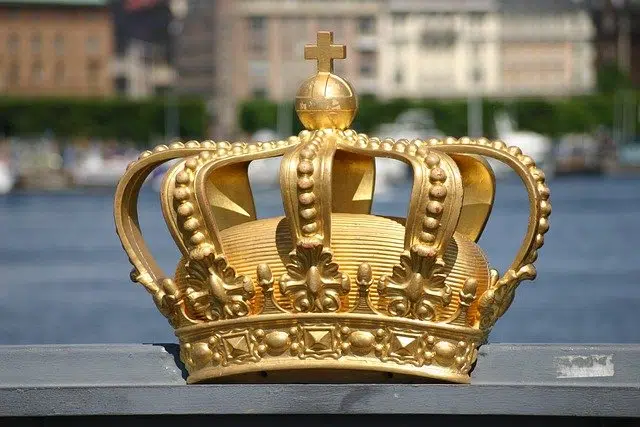
A crown can be an honorary badge.
Corona , from the Latin corona , is a term with several meanings. It may be the metal fence, flowers or branches that is placed on the head as a symbol of an honorary insignia, a dignity or as an ornament.
For example: "I will enter Edenton Castle and steal the crown of King John IX" , "The monarch walked among his subjects wearing a crown of gold and diamonds and a velvet cape" , "Upon receiving the olive crown, the Olympic champions could not contain their tears of emotion .
The crown as symbolic recognition
A crown can also be a symbolic recognition , without physical testimony. In these cases, the expression "uncrowned king" is often used since a person is considered to reign in a certain area due to their conditions or achievements.
«With the new title, Lionel Messi confirmed that he holds the crown of world football», "The Los Angeles Lakers team will try to recover the crown even though it has lost its historic coach" y «The director wants to revalidate his crown as critics' favorite son with his new production» son frases que muestran este uso.

The circular floral arrangement is known as a wreath.
A flower arrangement, something circular and a monetary unit
A wreath can also be a set of leaves and/or flowers that are arranged in a circle : "The family asked the singer's followers not to send wreaths, but rather to donate the money to charities," "Don Javier was excited when he arrived." a crown from his native land» , «The children's crown was placed next to the box» .
Another use of the term refers to a circular thing that has a high part : "To make the dough, first we have to make a crown with the flour and place a tablespoon of oil in the middle."
The monetary unit of certain countries , the part of the teeth that protrudes from the gum and the artificial piece that protects or replaces said dental part is also known as a crown.
Crown in music theory
The crown, also called calderón , is a sign of musical notation that allows indicating a moment of rest, since it lengthens the duration of the figure it affects, and this can be either a note, a silence or a bar. compass. Its effect is to prolong the existing pulse to the figure before the crowned one; Although it does not establish an exact amount of time for said alteration, since it is up to the taste and discretion of the performers or directors, the most common thing is that the duration is doubled.
In concertos for soloists, the crown is used to indicate cadenzas, passages in which the musicians have complete freedom to improvise. In the da capo arias , coming from the Baroque and characterized by consisting of three parts (A, B and C), this sign serves to indicate the end of the first part.
Regarding its appearance, the crown has a very simple and easy to distinguish design : it is formed by a point and a semicircle that is located above it, although it can also be drawn in the opposite direction.
The preferred tendency of academic music is to place the crown on the figure whose duration you want to alter , regardless of the direction of its stem (the vertical bar that is attached to the head of all figures, except for the round one). However, it is possible to place it below, if the staff requires it for reasons of space, or due to a stylistic decision of the composer or reviser.
The origin of the crown dates back to the Middle Ages, to the 14th century, and generally affected the last note of the pieces. In the Renaissance, composers such as Josquin des Prez and Guillaume Dufay used it on many occasions. During the Baroque, some composers, among whom was Johann Sebastian Bach, used the crown to indicate the end of a phrase.
